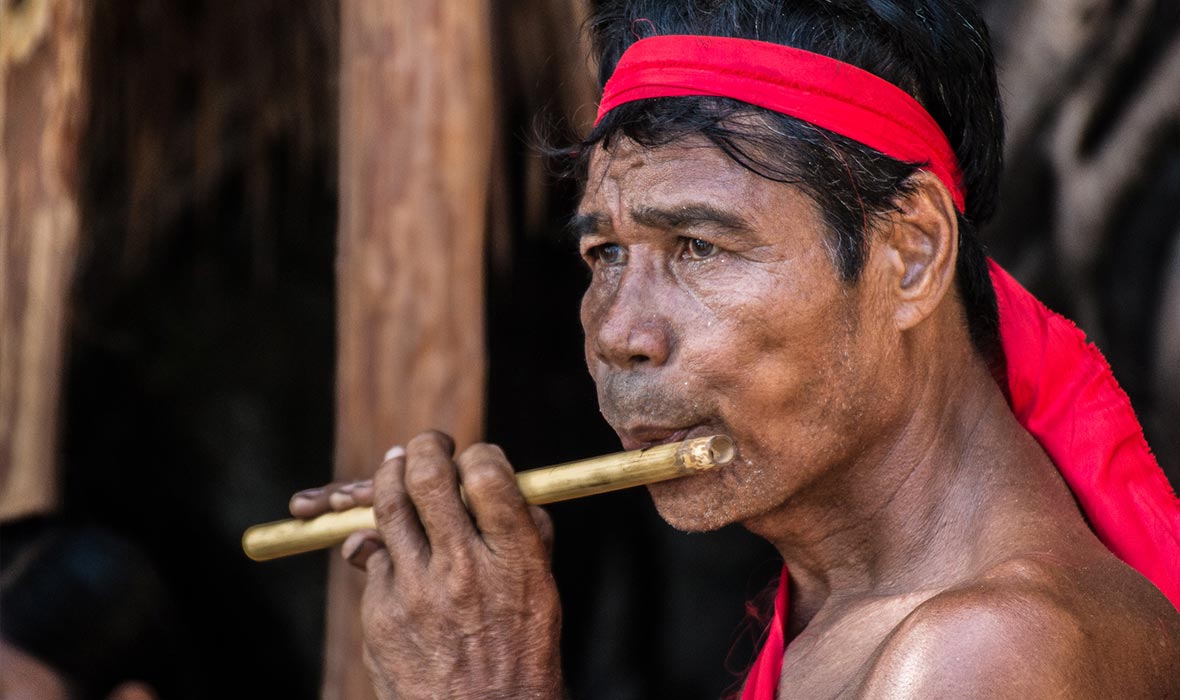The Tagbanua are one of the indigenous tribes inhabiting the Palawan archipelago in the Philippines. With a rich history and culture, they have long been an integral part of Palawan’s vibrant tapestry.
The Tagbanua people are known for their traditional way of life, which is deeply connected to the natural environment. They have lived in harmony with the islands for centuries, practicing sustainable fishing, farming, and hunting techniques. Their culture is reflected in their traditional crafts, music, dance, and oral traditions.

The Tagbanua: Echoes of Palawan’s Past
Picture this: Lush jungle gives way to a hidden village where the rhythms of life haven’t changed in centuries. This isn’t a movie set; it’s the world of the Tagbanua people, one of Palawan’s oldest indigenous groups. With traditions stretching back millennia, they embody the unique spirit of this Philippine island. Let’s dive into their fascinating world!
Who are the Tagbanua?
The Tagbanua, meaning “people of the village,” are one of the Philippines’ most ancient tribes. Some trace their lineage back to the Tabon Man, among the earliest inhabitants of the archipelago. They primarily inhabit central and northern Palawan, particularly Coron Island and its surroundings.
A Life in Balance: The Tagbanua Way
- Harmony with Nature: The Tagbanua possess deep ecological knowledge. Slash-and-burn agriculture (done sustainably!), fishing, and forest dwelling reflect a life attuned to the environment. They understand that their wellbeing is the land’s wellbeing.
- Homes on Stilts: Traditional Tagbanua houses are marvels of adaptability! Made from bamboo and palm, they are raised on stilts and sometimes even designed for easy relocation. This reflects their flexibility and respect for the natural world.
- Rituals & Taboos: Life milestones, successful harvests, and communication with ancestral spirits are all marked with vibrant rituals. Pregnant women observe fascinating dietary and behavioral customs, showcasing the Tagbanua’s intertwining of the practical and the spiritual.
- The Art of Storytelling: Tagbanua evenings come alive with “Pasigem” (riddles) and “ugtulen” (folk tales)! These aren’t just fun, but ways to pass wisdom and tribal history down through the generations.

One of the most fascinating aspects of Tagbanua culture is their unique language, which is spoken only by a small number of people. The Tagbanua language is a treasure trove of cultural and historical information, providing insights into the tribe’s past and present.
If you’re interested in learning more about the Tagbanua people and their culture, there are several opportunities to experience their way of life. You can visit their villages, participate in cultural activities, and learn about their traditional crafts.
Unique Heritage: Tagbanua Language & Script
Incredibly, the Tagbanua possess one of the few surviving pre-colonial writing systems in the Philippines! Their script, related to ancient forms once used by other Filipino groups, adds another dimension to their cultural preservation efforts. While many Tagbanua also speak Tagalog or other regional languages, their script is a point of pride.
Challenges and Resilience in the Modern World
Like many indigenous groups, the Tagbanua face pressures of deforestation, land encroachment, and a globalized world that can devalue tradition. However, they’re actively working with NGOs and the government to protect their ancestral lands, revive customs, and ensure a future where their heritage survives.
Ethical Encounters: How to Experience Tagbanua Culture
The best way to understand the Tagbanua is to visit them respectfully! Here’s how:
- Community-Based Tourism: Choose tours run by or benefiting Tagbanua communities. Overnight village homestays (if offered) beat rushed day trips any day!
- Learn, Don’t Just Observe: Ask about their farming methods, the stories behind their dances, and the meaning of their crafts. Be a student, not a spectator.
- Support Their Economy Directly: Buy handicrafts from Tagbanua makers at fair prices, and avoid haggling over tiny amounts.
- Dress & Act with Respect: Modest attire is appreciated, and always ask before photos. Follow local customs, even if they seem unfamiliar, to show you value their way of life.
Island Hopping with a Conscience? Look to Green Gecko!
Seeking an immersive experience that prioritizes sustainability? Green Gecko Expeditions offers amazing 3-day boat trips between Coron and El Nido, with a focus on island hopping. Their itineraries often include stops in areas where Tagbanua communities reside. Look for keywords like ‘Coron to El Nido boat tour’, ‘Philippines island hopping’, or ‘El Nido to Coron expedition’ to find trips that prioritize ethical travel.
The Tagbanua: Guardians of Palawan’s Soul
Palawan is more than just beaches. It’s a place where ancient cultures still thrive. The Tagbanua remind us of the deep connection between humans and the natural world, and the importance of preserving traditions. Whether you encounter them in person or learn from afar, their story enriches our understanding of the Philippines and the vital role indigenous peoples play in our world.
Tiki Tours offers a 3-day trip to El Nido
This is a great opportunity to learn about their culture and support local communities.
By visiting Tagbanua villages and interacting with their people, you can gain a deeper understanding of Palawan’s rich heritage and contribute to the preservation of their culture.
Have you interacted with the Tagbanua? Share your experiences!
